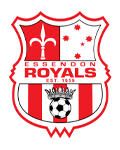History
A Royal Story
From the days of Union Sportive Triestina to the Essendon Royals we know today, our club has a long storied tradition in the game.
We have compiled and continue to build this section of our website with the help of dedicated Royals families and friends.
Got something to share? Spotted a mistake?
Send it to marketing@essendonroyals.com.au
OVERVIEW
Essendon Royals began life in 1959 as Unione Sportiva Triestina. The name reflected the Italian roots, specifically the city of Trieste, of its founders. Since those early days the Club has experienced its fair share of promotions and relegations. It has played in virtually every division including the Victorian Premier League. Four mergers over that period have also seen the Club’s name change fairly frequently. The last merger with East Brunswick-Ivanhoe SC in 1994 added Royals to the club’s name. Despite all these changes, the Club continues to follow the tradition of the Club’s founders, providing the local football community with an opportunity to indulge their passion for the World Game.
In 2019, the Club celebrated its 60th anniversary, which provided a great opportunity to chat to some of the great and most influential figures from the club’s history.
In this video we chronicle the clubs’ origins right through to the modern day.
MERGERS & MILESTONES
Mergers
1959 – Unione Club Sportiva Triestina founded
1961 – Fiorentina Merges with Footscray
1964 – Unione Club Sportiva Triestina Merges with Fiorentina
1967 – Begins playing under the name Maribyrnong Triestina
1970 – Unione Club Sportiva Triestina Merges with local Roma team
1972- Begins playing under the name Essendon City Triestina
1976 – Merges with San Giusto VGPF
1982 – Merges with Moonee Ponds. Begins playing under the name Essendon City.
1992 – Begins playing under the name Essendon City Jets
1995 – Merges with East Brunswick-Ivanhoe. Begins playing under the name Essendon-Brunswick Royals
1999 – Club becomes known as Essendon Royals
Senior Men’s Milestones
1962 – Victorian Division 2 South Champions
1963 – Victorian Division 1 South Champions
1965 – Relegated from Victorian State League
1969 – Relegated from Victorian Metropolitan League Division 1
1970 – Relegated from Victorian Metropolitan League Division 2
1971 – Relegated from Victorian Metropolitan League Division 3
1973 – Victorian Metropolitan League Division 4 Champions
1975 – Relegated from Victorian Metropolitan League Division 3
1976 – Promoted from Victorian Metropolitan League Division 4
1978 – Relegated from Victorian Metropolitan League Division 3
1983 – Promoted from Victorian Metropolitan League Division 4
1985 – Promoted from Victorian League Division 3
1986 – Promoted from Victorian League Division 2
1991 – Relegated from Victorian State Division 1
1992 – Relegated from Victorian State Division 2
1999 – Promoted from Victorian State League Division 2
2000 – Promoted from Victorian State League Division 1
2001 – Relegated from Victorian Premier League
2002 – Promoted From Victorian State League Division 1
2007 – Relegated from Victorian Premier League.
2007-2009 No senior men’s team fielded
2010 – Essendon Royals re-enter senior men’s competition, entering Provisional League Division 3 South-East
2011 – Promoted from Provisional League Division 3 North-West
2014 – Men’s State League 3 – North-West Champions
2016 – Promoted from Men’s State League 2 – North-West
Senior Women’s Milestones
1995 – Essendon-Brunswick Royals field inaugural senior women’s team in the Division 3 North-West competition
1996 – Promoted from Division 3 North-West competition into Division 2 North-West
1999 – Moved into Victorian Premier League
2014 – Senior Women’s team re-established after 14-year absence. Plays in State League 3 West
2015 – State League 3 West Champions
2016 – Promoted from State League 2 West
2018 – Relegated from State League 1 North-West
2019 – Promoted from State League 2 North-West
REMINISCING ROYALS
Hear from some of the people who have made the Royals great!
The interviews below were conducted in 2019 as part of the club’s 60th Anniversary.
BY THE DECADE
Since being founded in 1959 as Unione Sportiva Triestina, the club that would become the Essendon Royals in 1995 has been through it all.
From stints in the highest state competitions for men and women, to having to build from the bottom, the Essendon Royals story has something for everyone.
On this page, we break down the story by decade as we highlight the major milestones and even the turbulent times this club has endured.
Start with the overview below and check out the decade-by-decade detail underneath.
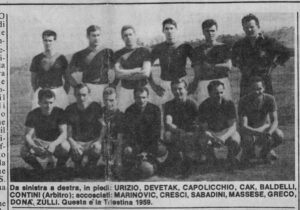
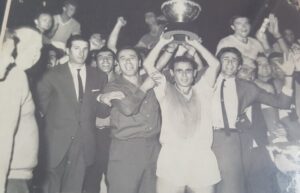
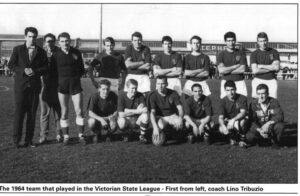
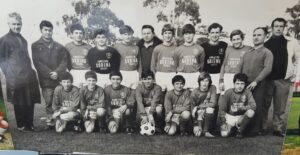
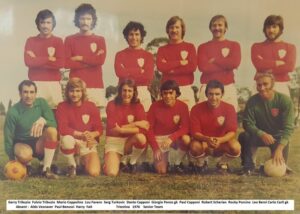
THE 1950s | humble beginnings
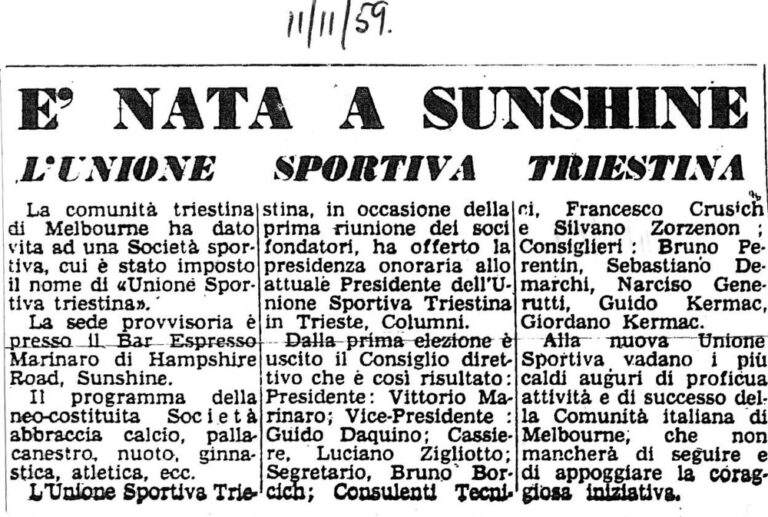
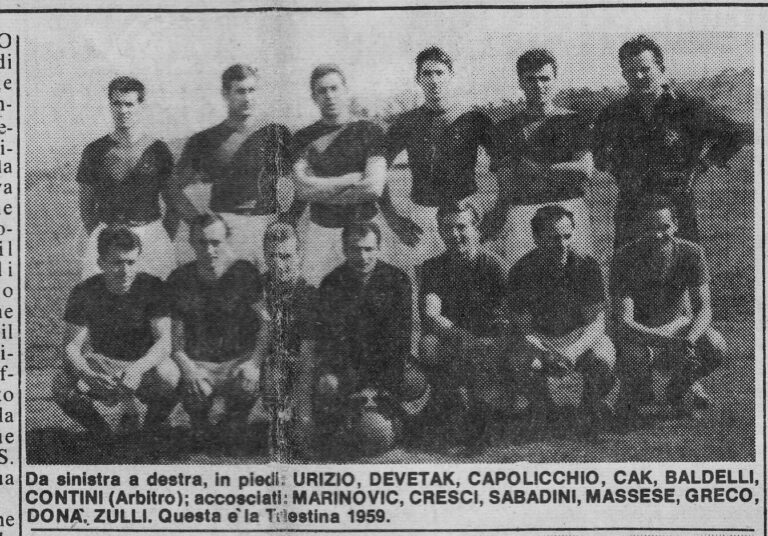
Whilst the Unione Sportiva Triestina club which would become the Essendon Royals registered its constitution in 1959, an umbrella organisation, also called the Unione Sportiva Triestina was founded in 1954.
It was affiliated to the Olympic Association but had no legal address.
It incorporated under its umbrella the successful Triestina Basketball as well as swimming and water polo teams.
“1954, Addio Trieste…. The Trestine Community of Melbourne” by Adriana Nelli, there is very little recollection of the early years of the club which, as she writes “faded into insignificance almost immediately after its inception, lying dormant because the network of Triestine’s in Melbourne had not yet sufficiently expanded, the association was nonetheless resurrected in 1959 once the numerical strength and the network linkages of the Triestine community had grown and expanded.”
The Unione Sportiva Triestina which would be come the Royals registered its constitution with the Victorian Soccer Amateur Football Association in 1959, which is recognised as the soccer club’s official founding year.
Its first official “home” was a café owned by original president Vittorio Marinaro in Sunshine and had 100 members to start with.
Attilio Dereani had a huge impact on the direction the club would take. Having established Unione Sportive, a lack of money was a problem and setting up a soccer team was a dream, until Dereani, while based in the reception centre in Bonegilla, suggested a friendly game against friends based in Melbourne.
The game was played in Bonegilla reception centre, Wodonga in October 1959. Players from teams around Melbourne were given on loan to US Triestina
Attilio Dereani had a huge impact on the direction the club would take. Having established Unione Sportive, a lack of money was a problem and setting up a soccer team was a dream, until Dereani, while based in the reception centre in Bonegilla suggested a friendly game against friends based in Melbourne.
The game was played in Bonegilla reception centre, Wodonga in October 1959. Players from teams around Melbourne were given on loan to US Triestina
While not the first official game played by the club, this was the beginning of the Triestina soccer team.
THE 1960s | HIGHS & LOWS IN FIRST DECADE OF COMPETITION
The 1960s were the club’s first decade in senior men’s competition.
At this time, the club had no junior teams and just fielded a senior men’s and reserves team.
Off the field, the club was led for the majority of this decade by Bruno Tessari, who would become one of the club’s most influential figures.
His first year as President came in 1964 and he would hold the role on and off until 1983.
Other presidents during this decade included Vittorio Marinaro, Vittorio Crulli, Vincenzo Pitterino and Donato Manduca.
1960-1961
Whilst some records suggest the team competed in the Provisional League 4 in 1960, the first proper season record for the club is from 1961, when the club competed in the Victoria Provisional League.
The club played its home games at Princes Park in Carlton, and had a mixed bag season in terms of results, finishing seventh out of 11 teams with a record of eight wins and 10 losses from 18 games.
The clubs first coaches were Paddy Sloan, Giuseppe Magnavacca and Gino Panichi
1962
It didn’t take long for Triestina to find winning form, however, and in 1962, the club enjoyed its first taste of silverware, winning the Metropolitan League 2 South division.
1963
The club’s rise to the top tier of Victorian football continued with a second-straight championship, this time in the 1963 Metropolitan League 1 South division, earning promotion to the State League for the 1964 season.
1963 was also the club’s first season at Ormond Park, the traditional home of the Essendon Royals.
Player-coach Lino Tribuzio – a name which would to this day remains synonymous with the club – spearheaded the charge up the ranks of Victorian football as player-coach.
Other names on the team sheet during these years included Alberto Del Fabbro, Aldo Trentini, Pepe Cubero, Steve Salabassides and Tony Cerni.
Cerni and Salabassides in particular troubled the scorers and were regulars amongst the goalscorerers, as Triestina stormed to the title with a six-point margin over second-placed Austria.
1964-1965 – The State League Years
The gap between the Metropolitan Leagues and the State League was a big one.
Still, Triestina survived the drop, finishing the season in 11th place out of 12 team.
The campaign got off to a great start with a 1-0 win over Alexander.
For the club’s first game in Victoria’s top flight, Lino Tribuzio’s side lined up as follows:
Erno Grosz, Peppino Sonsini, Germano Strohhecker, George Gerdan, Tony Giardinazzo, Sergio Zamola, Peter Balassone, Ian Gow, Carlo Cerni, Sam Cappelletti, John Bressan.
Due to State League requirements, Triestina spend much of 1964 on the road, playing home games at Campbell Reserve in Coburg, Olympic Park and the Showgrounds whilst taking on the likes of soon-to-be National Soccer League clubs South Melbourne, Juventus, Footscray JUST.
Towards the end of 1964, the club completed the first of many mergers to come, linking up with Fiorentina.
Fiorentina, a Metropolitan League club, had previously merged with Footscray an off-shoot of the Footscray JUST club playing in the State League.
Whilst Triestina avoided the drop in 1964, there was no such luck in 1965.
The club played home games at Middle Park, Showgrounds, Olympic Park and others as Triestina was consigned to bottom place picking up just six points.
1966-1967
The back-half of the decade was a mixed one for the club.
Whilst the club retained the name of Unione Sportiva Triestina following the merger with Fiorentina, by 1967, the club was known as Maribyrnong Triestina.
1966 and 1967 saw the club establish itself as a mid-table outfit in familiar surrounds in the Metropolitan State League 1 division.
Despite its relegation from the State League, the club was still homeless as a return to Ormond Park was not on the cards.
President Bruno Tessari fought a fierce campaign to have the club relocate to Fitzroy Cricket Ground (read more in the Soccer News extract on the right).
Triestina was unsuccessful in its attempts to play out of the ground and instead spent the 1966 and 1967 season groundhopping.
1967 home games were played at Selwyn Park in Sunshine, where the club shared the ground with State League outfit Sunshine George Cross.
Tony Boggi was the coach for these two seasons, overseeing a league record of 44 games played for 16 wins, 11 draws and 17 losses.
1968-1969
The 60s ended on a sour note for Triestina.
Home games were moved to Campbell Reserve, somewhat familiar surrounds for the club at the time, but this had little effect on on-field performances.
The intervention of Rale Rasic, who would eventually become a very well-known figure in Australian football, helped Maribyrnong Triestina avoid relegation in 1968.
Rasic was one of three coaches listed for the 1968 season alongside Tony Boggi and Bill Curran, in which the club finished third last in the Victorian Metropolitan League Division One.
Former State League squad member John Bressan had a crack at the coaching role in 1969, alongside Frank Stradiot, but Triestina was consigned to relegation, finishing in last place in the 1969 Victorian Metropolitan League Division One competition.
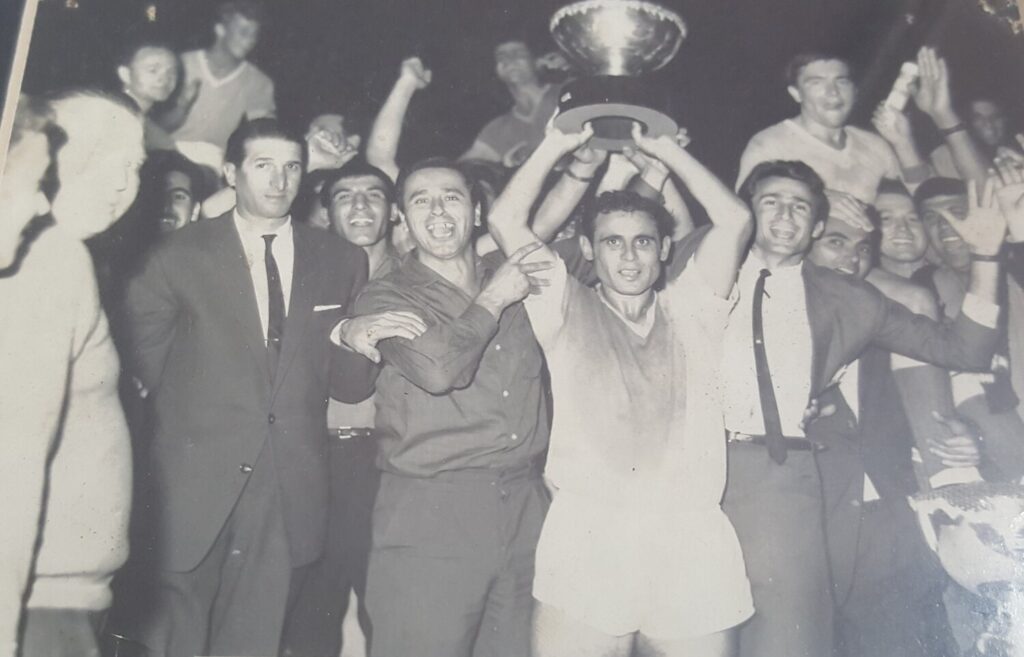
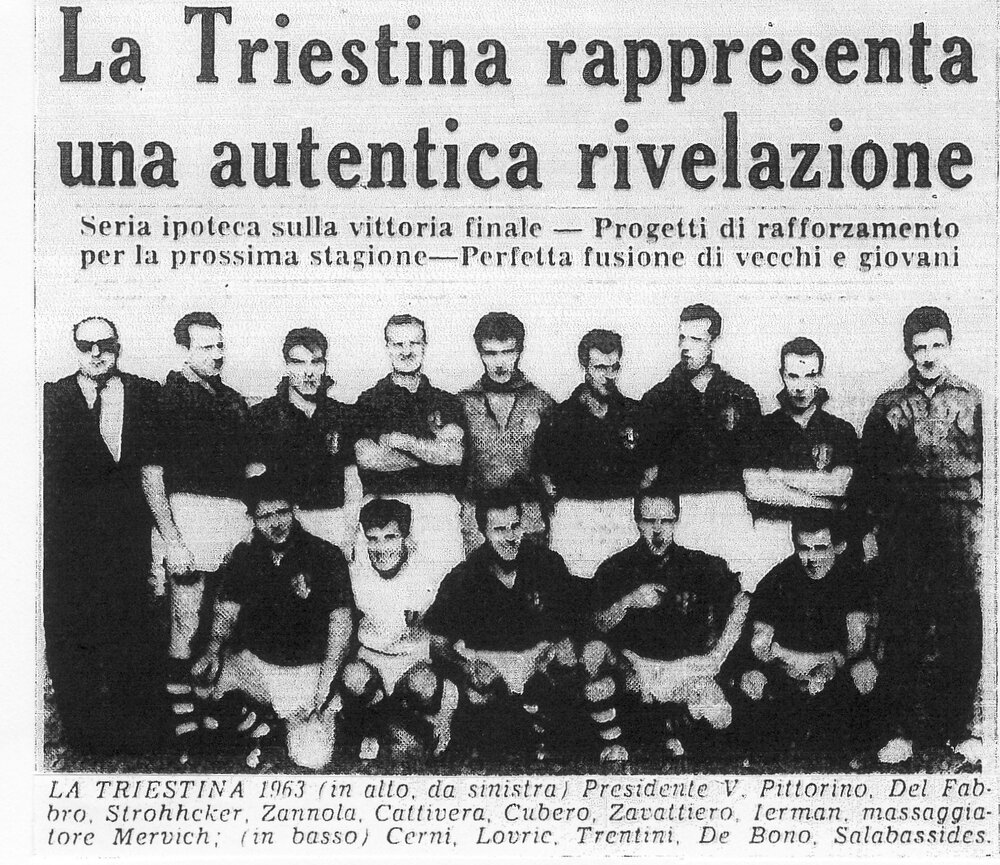
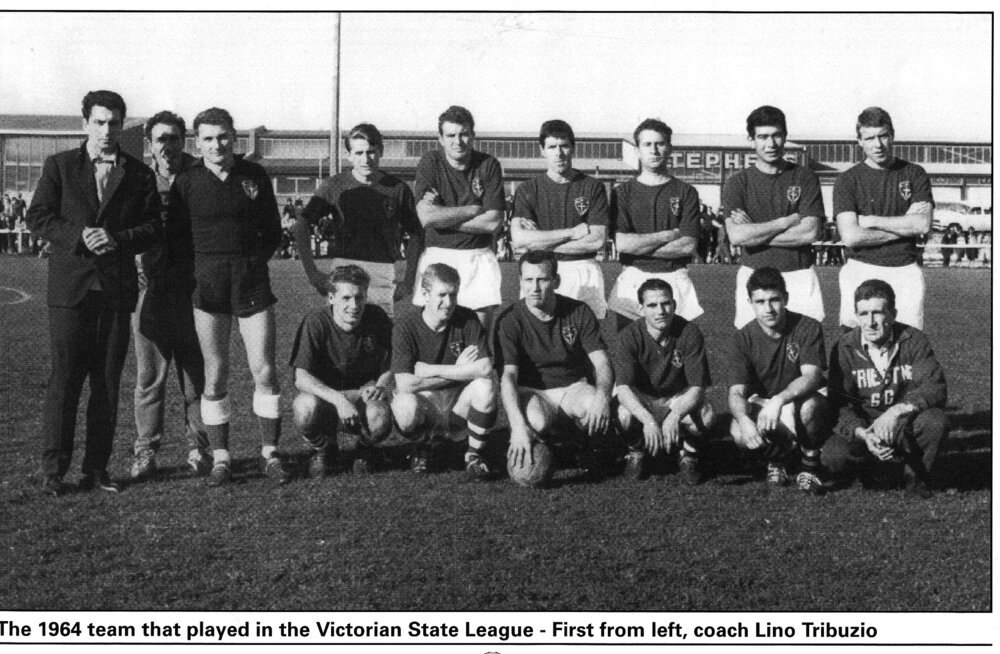
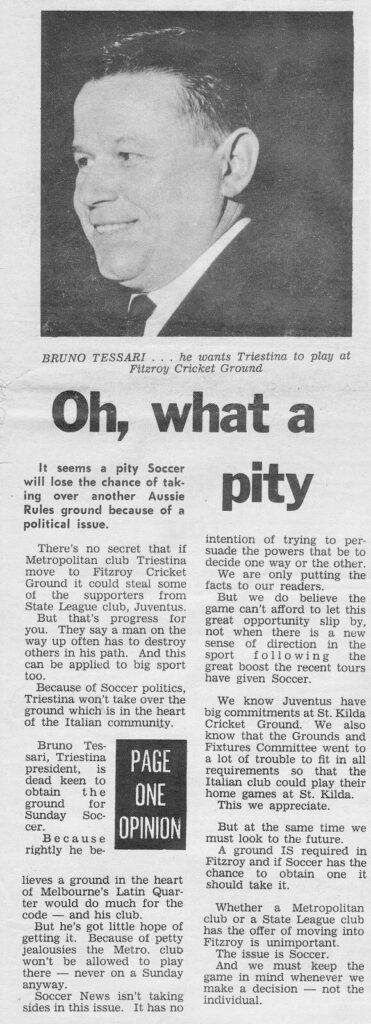
The STATE LEAGUE SEASONS |1964 & 1965
Triestina’s rise to the state leagues following its inception in 1959 was as spectacular as it was rapid.
The gap between the State League, Victoria’s – and arguably Australia’s – top competition was sizeable, so when Triestina won promotion from the Metropolitan League in 1963, most contemporary commentators expected Triestina to go straight back down in 1964.
Triestina would prove its doubters wrong.
By the skin of its teeth, Triestina avoided relegation as coach Lino Tribuzio bravely led his team against some of Australia’s biggest and best clubs.
Despite surviving relegation in 1964, it was going to be another tough campaign in 1965 and at the second time of asking, survival was just a tough out of reach for Tribuzio’s men.
Whilst on paper, Triestina’s state-league record might not look like much to look at, this was a team that had risen so spectacularly through the ranks of Victorian football and in 1964 did something so few promoted clubs had managed to do by surviving the drop.
